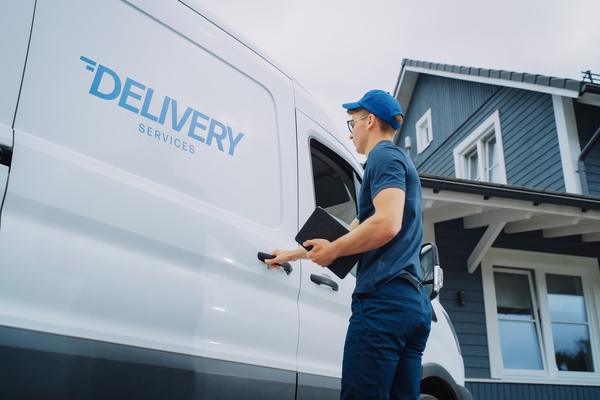If the shoe fits, wear it

Noel Lavery at Infobip explains how embracing digitalisation will boost fashion retail.
In a year where many events are having to re-think virtually, this September saw one of the UK’s most iconic fashion events - London Fashion Week – take to the ‘digital stage’. Its multimedia schedule, was largely shaped by the restrictions of COVID-19, but the results were no less exciting. Burberry met the challenge by hosting its Spring/Summer 2021 collection in woodland, with the audience watching on Instagram and on the gaming platform Twitch.
COVID-19 has had a meteoric impact on the fashion industry, forcing many brands to accelerate digital transformation. We buy clothes more frequently through online retailers like ASOS – the ONS found that as of June 2020 internet sales as a percentage of total retail sales stand at 31.2%, a 12% increase compared to September 2019. We can try on clothes virtually now – Gucci recently partnered with Snapchat to create an augmented reality wardrobe lens. And now we see the latest avant-garde trends via digitally streamed fashion events.
Customer experience has changed with this rapid digitalisation, especially in retail. There’s an ever-expanding digital arena to navigate which is booming in the wake of COVID-19. With social distancing measures in place and familiar instore experiences such as trying on clothes and sampling products unable to return in the current climate, more and more shoppers are opting to purchase fashion items online with little to no human interaction.
Instead today’s consumers expect to be able to communicate with brands via multiple channels at a time that suits them. In fact, there’s a huge variety of preferences: research from Infobip found that almost half (46%) want to communicate via email with a customer service team during COVID-19, 35% via live chat online, 17% by social media and the list goes on.
By looking at the ever-transforming world of fashion, we can learn much about the changing face of customer experience.
What are customers calling for?
The pressure is on for retailers. Our research found that 33% of UK consumers have higher expectations of customer service following lockdown. So, what can brands do to meet these growing needs?
Many brands are still stuck in a traditional mindset: pre-2010 most businesses relied on email, post, and telephone to communicate with their customers. In today’s ‘always on’ culture, this approach to customer service doesn’t cut it. With the rise of the chatbot and more consumers taking to social media to call out those brands that have failed to deliver, being able to provide an instant customer service response has become a top priority.
Whilst there isn’t a standout channel for customer service communications, there are some noteworthy generational differences that brands should recognise. In the UK, 18-24 year olds are much more likely to use social media to contact a brand compared to 55+, reinforcing the point that brands can no longer take a one size fits all approach when it comes to customer interactions. Investing time into understanding the expectations of every customer is essential to generating and retaining their valued trust. The bottom line is that there’s a plethora of platforms: it’s all about omnichannel.
What is the best tech for talking to customers?
For years we have been hearing about the death of the call centre. We have also seen countless examples of brands attempting to revamp and breathe life back into their call centre operations. In 2019 Gucci turned to its call centres in a bid to lure high-spending millennial shoppers into their stores. Implementing rigorous standards for its call centre staff, with plush premises designed by Alessandro Michele, but what the luxury fashion retailer failed to recognise was that whilst a seamless call centre experience is appreciated, there is also much more to a brand’s customer experience. Millennials may appreciate human interaction with a kind phone call, but they also want a blend of interactions, to explore brands on apps and converse with representatives via chatbots.
The best customer service technology leverages machine learning and helps add the personal touch to a buyer’s journey. Recognising this shift in customer preferences and utilising the technology that will aid this transition is essential for brands endeavouring to keep up with their customers. Ardent trend-setter of fashion, Vogue, has already turned to digital tools to help it make this transition, and in June 2020 saw the biggest month in its online history with over 5 million unique users reading the digital edition of the monthly magazine.
The age of the customer experience centre
Goyard, the luxury luggage retailer famously eschews online retail, yet this unique luxury outlier still manages to retain a dedicated customer base. Upon the re-opening of its stores post-lockdown it was recently reported that Goyard’s Mayfair store boasted a long queue of eager shoppers. But whilst this approach may work for Goyard, it is very much the exception rather than the rule - very few brands can get away with such attitudes at present.
It’s all about visibility and identifying which channels will appeal to the interests of the modern-day consumer. This is the age of experience, meaning brands need to think about the whole customer journey from start to finish – and customer service is an integral part of this. The use of automated responses and messages across different channels to gather essential customer information means agents can focus on providing the right, personal response, ultimately encouraging customer loyalty.
Digital is the new frontier – and this isn’t a trend that is exclusive to fashion – it applies to all customer service sectors. With more than half (54%) of UK consumers claiming they will purchase from businesses again if the service was positive, we know customers will vote with their feet. So, make sure you’re doing everything you can do to get their vote.
Noel Lavery is Sales Director UK at Infobip.
Main image courtesy of iStockPhoto.com

Business Reporter Team
Most Viewed
23-29 Hendon Lane, London, N3 1RT
23-29 Hendon Lane, London, N3 1RT
020 8349 4363
© 2024, Lyonsdown Limited. Business Reporter® is a registered trademark of Lyonsdown Ltd. VAT registration number: 830519543
Join the Business Reporter community today and get access to all our newsletters, and our full library of talk show episodes
Join the Business Reporter community today and get access to all our newsletters, and our full library of talk show episodes





